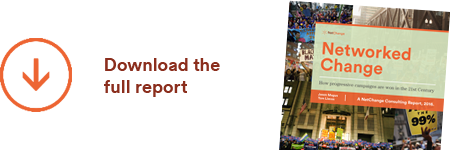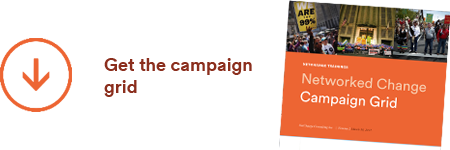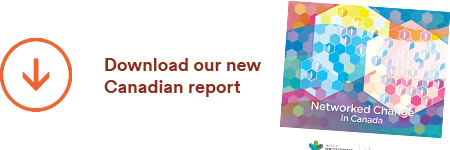Earlier I wrote how many of today’s most successful digital campaigns are grown from organizations who are thinking differently, and just with their online campaigns. These “network organizations” operate in fundamentally different ways from traditional centralized organizations, and, with relatively few resources, are growing faster and having an outsized impact on our world.
What’s a network organization? From the business world, think Facebook, Google, & Groupon. In NGO’s, think Avaaz, MoveOn, & MomsRising. And what about Wikileaks, Sarah Palin, and the Obama presidential campaign? All have attributes of organizations with network principles baked into their core.
Interestingly, most of these examples were founded in the last 10 years, after the Internet came of age. But adding network principles is not just for the new kids. The trouble is that while embracing this thinking in digital campaigns is starting to catch on (though you’d be amazed at how many still do it exactly wrong), actually executing and managing truly social campaigns out of traditionally structured organizations is extremely difficult. Thinking like a network means more than having a cool website – it means looking at the way we do our work, and evolving our organizations so they can become more responsive, collaborative, and, well, community-driven.
Consider these stories from some of our favourite networked orgs I spoke about in Part 1, and how their structures support network building:
- Avaaz: another largely virtual organization with fewer than 20 people. All staff have a deep understanding of politics, online, and community organizing. They focus exclusively on “tipping moments” and winnable campaigns. To choose priorities, they poll their members on what matters to them, and only go where members show interest. They don’t run “programs”, so when they set a campaign target (like the Sep 21 Global Wake Up Call I helped through TckTckTck) their staff put 100% of their energies to making it successful. They are even highly transparent with their theory of change and how people fit into it, read this and tell me you’re not inspired
- 350.org: have become a major movement builder globally, coordinating over 14,000 climate change events in every country on earth. This with a team who met at a college in Vermont only four years ago. They are largely virtual, with fewer than 10 staff, and work in true collaboration with their global grassroots network of local leaders. Everyone in the org blogs, all use digital tools to communicate and collaborate
- TckTckTck: I was part of a small virtual team of this $12M global climate campaign in 2009. We collaborated constantly with our team and our partners (sometimes it wasn’t clear who was working for whom), and responded to an extremely rapidly changing environment. We listened hard to what partners were doing, supporting their most effective work (while ignoring a lot of their noise), and filled in gaps. We also shared the credit and worked to grow lasting capacity in other leaders
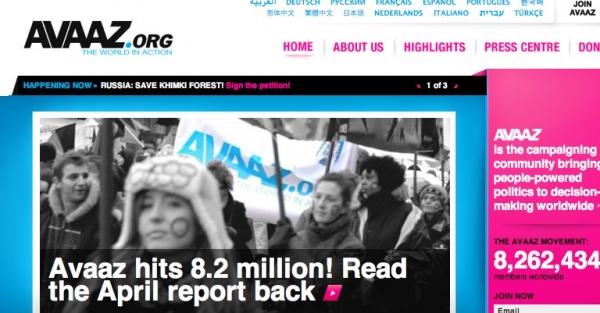
From my own observations working with these groups familiar patterns emerge: small, usually virtual teams of multi-skilled people – all leaders in their own right – collaborating in real time without silos or management reporting boundaries. Not distracted by ongoing programs that muddy priorities and chew up resources, and empowered to say no to opportunities that don’t fit or aren’t realistic. Valuing listening, letting the community they serve inform (or even set) priorities, and collaborating openly with them on their most important work. Disciplined people, tracking metrics in real time, dropping what doesn’t work, and focusing on a few key leverage points, throwing everything they’ve got at one thing when openings appear.
They way they use technology is also important. There is often no “web department” of networked orgs – everyone is comfortable using modern communications tools. There are of course specialists on staff to build and fix things, but no one has to ask a different department to “blog that story” or “tweet that insight”, everyone has their fingers on the pulse of a different version of their constituency, everyone is a collaborator. Technology helps them do this faster and more efficiently, and lowers the barriers between those inside and those outside the organization.
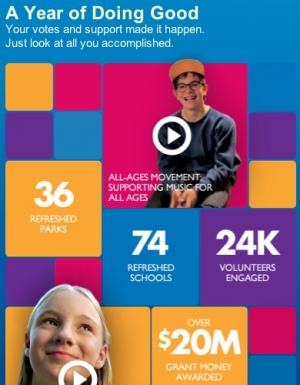 How about our corporate and government examples? What’s going on in their campaigns that makes them act like networked organizations?
How about our corporate and government examples? What’s going on in their campaigns that makes them act like networked organizations?
- Pepsi Refresh – under the leadership of CEO Indra Nooyi’s “performance with purpose” mantra, Pepsi has been pushing social and environmental leadership for years. This campaign was custom tailored to engage elusive “Millennials” or socially engaged youth who desire more authenticity and meaningful engagement. Campaign core values included empowering (people and communities), collaborating (with NGO’s and like minded “free-agents” who fundraised on their behalf), and partnerships (with GOOD Magazine and Global Giving) drove the strategy and execution . See more here.
- City of Vancouver – TalkGreenToUs was run as a skunkworks within the slow moving city bureaucracy, by 3 young, empowered entrepreneurs. They were given a mandate and targets, but not told specifically how to execute them, nor did they have to ask permission for everything they did. They integrated on-line campaigning with off-line events, connecting with dozens of existing vibrant networks in Vancouver. They tracked their analytics and dropped ideas that weren’t working, to focus on what was
Some of these stories may seem small scale, and indeed many are. But they point us towards how new models can help us all re-fresh our work for these changing times where large institutions’ power continues to wane. 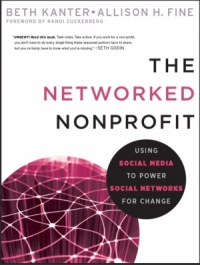
Here is more from Beth Kanter and Allison Fine’s excellent book The Networked Nonprofit:
Networked Nonprofits don’t work harder or longer than other organizations, they work differently. Nonprofits have too much to do because they try to do too much as stand-alone organizations. Networked Nonprofits know their organization is part of a much larger ecosystem of organizations and individuals that are incredible resources for their cause. Working this way enables them to reach many more people less expensively than they ever could working alone.
Ultimately I believe these shifts will be good for all of us. Imagine more focus, creativity, learning and adapting in the passion-driven work of solving problems. Less isolation, more connection and a true collaborative community to make change happen with. NGO experts playing our much needed leadership role but ensuring we get out of our own way to allow others to also rise. And with more people engaged in the process, longer lasting policies that don’t change with the political winds and may even lead to the cultural change we seek.
Digital campaigns, done right, can lead to catalytic organizational change towards network oriented models. That’s why we still love the web after 18 years in the biz!






